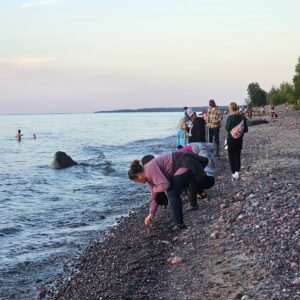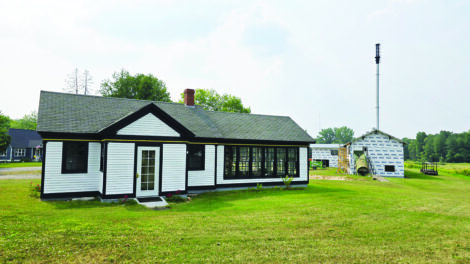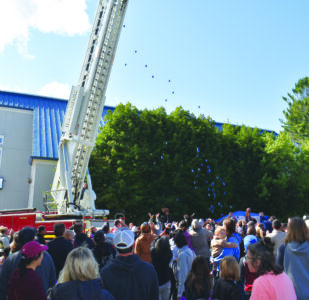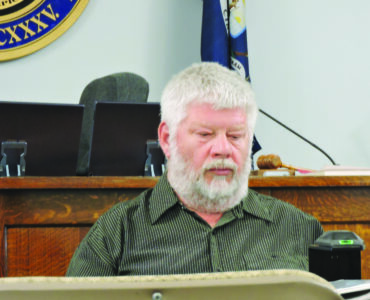Ford’s contribution to UP remembered
Pump house ribbon cutting Friday
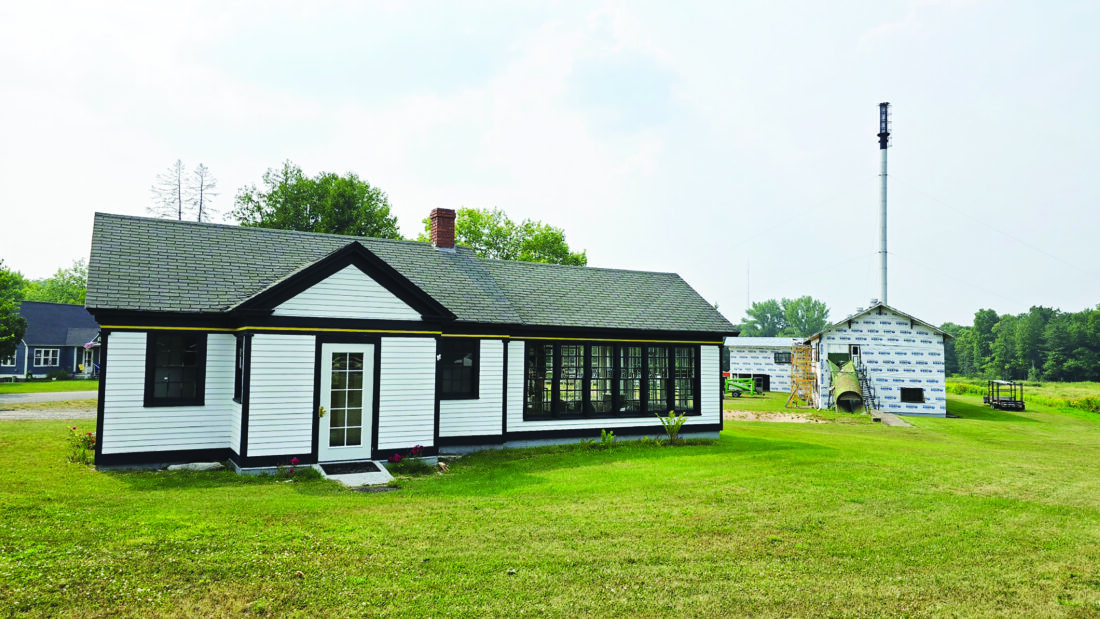
Photo courtesy of Wayne Abba. The former pump house at the Ford Lumber Mill, in Alberta, originally also housed a welcoming center for Henry Ford’s dream of the model community.
ALBERTA — Henry Ford’s influence in the Upper Peninsula is often overshadowed by copper and mining industry.
However, Friday’s ribbon-cutting ceremony at the Alberta Sawmill pump house is aimed at bringing more of Ford’s U.P. presence to light. Mike DesRochers, chairman of the Committee to Save the Alberta Sawmill, under the Baraga County Historical Society, said the ribbon-cutting ceremony is to celebrate the opening of the pump house museum and to showcase ongoing preservation work to the sawmill. The pump house will be an annex of the Baraga County Historical Society Museum.
“One of the things that we want to do with this, once we get the pump house open,” DesRochers said, “is we’re going to use it as kind of an information center for history.”
DesRochers said that will include Henry Ford’s contributions to the history of the U.P. with his Ford Motor Company Northern Michigan Operations.
According to the Henry Ford Museum of American Innovation and Greenfield Village (the Henry Ford), Ford began buying vast amounts of forestland in the Upper Peninsula in 1919. These prime hardwood forests supplied the lumber used to create vehicle bodies and parts. Other products such as railroad ties, shipping containers and chemical byproducts were also made, all to support Ford’s automobile operations and his goal of manufacturing self-sufficiency.
As part of the plan to render the company self-sufficient, Henry Ford and the Ford Motor Company purchased over 313,000 acres of timberland and two iron mines in the Upper Peninsula of
Michigan in the early 1920s. Construction of a sawmill was followed by a hydro-electric plant and drying kilns, making the facility the largest sawmill complex in the world.
In the 1920s, the Ford Motor Company constructed what was at the time the world’s largest sawmill complex in the U.P. The Iron Mountain plant supplied automobile body parts and wood patterns for the production of aircraft, ships, railroad cars, and mining trams. In Baraga County, Pequaming was settled in 1878 by Charles and Edward Hebard, and H.C. Thurber. They built a sawmill that produced pine lumber and shingles. Northern Michigan Univserity’s Baumier Upper Peninsula Heritage Center, in its “Remnants: Ghost Towns of the U.P.” says the Hebard Thurber Mill was the first and biggest lumber operation on Lake Superior.
In 1923 the sons of Charles and Edward Hebard sold 40,000 acres, including the Pequaming holdings of Charles Hebard and Sons, Inc., along with the town of Pequaming, to Henry Ford. Ford ran the mills in Pequaming and L’Anse to supply wooden car parts and crating material for his company.
The forest industry, particularly under Ford’s activities, was reflected in the growth of Baraga County. In 1910, Baraga County’s population was recorded at 6,124. By 1920 it had increased to 7,662 and had risen, by 1930, to 9,168. The sawmill at Alberta, in Baraga County, was to be the core of Ford Motor Company founder Henry Ford’s concept of a model company town. In addition to the Alberta mill facility, Ford also had a dozen or so houses constructed for its employees and their families, along with two schools for the children of the community. Ford operated the Alberta mill until 1954. The company then donated the facility and 1,700 acres of surrounding forest land to Michigan Technological University, which today is the Michigan Technological University Ford Center. DesRocher said there is a connection between Ford’s lumber mills at Pequaming, L’Anse and Alberta.
“We want to pursue to create a coalition with all these sites so if somebody comes up here to learn more about the history of Ford in the U.P.,” he said, “the welcome center will serve as a good starting point. DesRochers said the pump house, as well as the sawmill, was initially earmarked for demolition. The Historical Society looked into restoring it as a volunteer group. It was decided the exterior was too dilapidated to repaint, and it was beyond the capability of the volunteers, and the Society’s budget.
Initially, Michigan Tech, which owns the Ford Center, was reluctant to invest money into saving the building, but did contribute to the project through their maintenance personnel, said DesRochers. Michigan Tech provided the siding and the maintenance personnel from the university then re-sided it.
The ribbon-cutting ceremony is scheduled for 3 p.m. Friday. People will have the opportunity to tour the former pump house and welcome center, now a satellite of the Baraga County Historical Museum, and meet with preservation committee members to learn more about the history and significance of the site.

